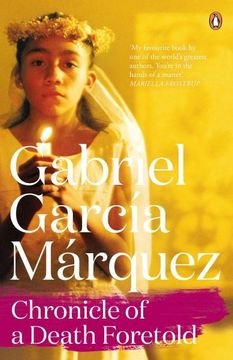Chronicle of a death foretold: brestricting fiction and reality

Chronicle of a death foretold is a novel by Colombian writer Gabriel García Márquez, first published in 1981.
With my students we are reading Chronicle of a Death Foretold, by Gabriel García Márquez, who has become the most translated author in the Spanish language. For me, it has not only meant a rereading of the work and, at the same time, a rediscovery of his narrative techniques, but also a reinterpretation of the work with 21st century values, accompanied by recent research on the history that, in the background, generated the Chronicle.
When I read it for the first time, in high school at the end of the last century, it was a marvel to read. Admiring the daring author who began with the climax of the story, the murder of the protagonist Santiago Nassar, I interpreted, possibly like the author himself, that Santiago was innocent of what he was accused of or, in any case, a victim of a plot that was brewing in his shadow. However, the perspective of my students was different: there was a victim, yes, but it was not Santiago but Ángela Vicario.

Guided by this rereading, we delved into other views of the work today. One of the most interesting is that of Nadia Celis, researcher and associate professor at Bowdoin College, who published a couple of articles in 2021 to commemorate the 40th anniversary of the publication of the work.
Celis cites the research work, though not yet translated into Spanish, of Akio Fujiwara. He mentions that Fujiwara, motivated by his youthful reading of García Márquez and the world described by the writer, decided to learn Spanish and become a correspondent in Latin America. Thus, like most readers, attracted by the intriguing secret of Angela Vicario, and by the final twist of her violent love story in Chronicle of a Death Foretold, Fujiwara tracked down the protagonist of the real drama in Sucre and Sincelejo, the places where the true story took place.
Through the contributions of Celis and Fujiwara we can unravel the real plot beyond the fictional, but undoubtedly masterful, story of García Márquez. Here is the link to read Celis' articles: .
THANKS FOR READING
Crónica de una muerte anunciada: limitando la realidad y la ficción

Crónica de una muerte anunciada es una novela del escritor colombiano Gabriel García Márquez, publicada por primera vez en 1981.
Con mis estudiantes estamos haciendo la lectura de esa novela de García Márquez, quien se ha convertido en el autor más traducido de la lengua española. Para mí no sólo ha supuesto una relectura de la obra y, al mismo tiempo, un redescubrimiento de sus técnicas narrativas sino también una reinterpretación de la obra con valores propios del siglo XXI acompañado de investigaciones recientes sobre la historia que, en el trasfondo, generó la Crónica.
Cuando la leí por primera vez, en el liceo a fines del siglo pasado, fue una maravilla de lectura. Admirado por el osado autor que comenzaba por el clímax de la historia, el asesinato del protagonista Santiago Nassar, interpreté, posiblemente como el autor mismo, que Santiago era inocente de lo que se le acusaba o, en cualquier caso, una víctima de una trama que se gestó a su sombra. Sin embargo, la perspectiva de mis estudiantes era otra: había una víctima sí, pero no era Santiago sino Ángela Vicario.

Guiados por esta relectura, nos adentramos en otras miradas a la obra actualmente. Una de las más interesantes es la de Nadia Celis, investigadora y profesora asociada en Bowdoin College, quien publicó par de artículos en el 2021 para conmemorar el 40 aniversario de la publicación de la obra.
Celis cita el trabajo investigativo, aunque aún no traducido al español, de Akio Fujiwara. Por ello, menciona que Fujiwara, motivado por la lectura en su juventud de García Márquez, y del mundo que describiera el escritor, decidió aprender español y hacerse corresponsal en Latinoamérica. Así, como la mayoría de los lectores, atraído por el intrigante secreto de Ángela Vicario, y por el giro final de su violenta historia de amor en Crónica de una muerte anunciada, Fujiwara rastreó en Sucre y Sincelejo, espacios donde transcurrió la historia verdadera, a la protagonista del drama real.
Por los aportes de Celis y Fujiwara podemos desentrañar la trama real más allá de la historia ficcional, aunque sin duda magistral, de García Márquez. Acá señalo el enlace para leer los artículos de Celis.
Congratulations @morey-lezama! You have completed the following achievement on the Hive blockchain And have been rewarded with New badge(s)
Your next target is to reach 83000 upvotes.
You can view your badges on your board and compare yourself to others in the Ranking
If you no longer want to receive notifications, reply to this comment with the word
STOPCheck out our last posts:
Support the HiveBuzz project. Vote for our proposal!